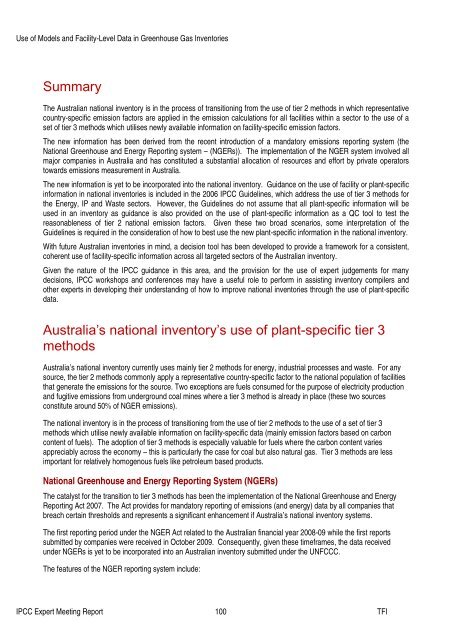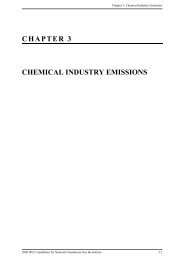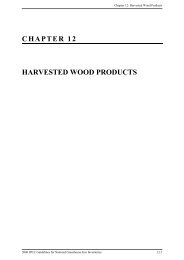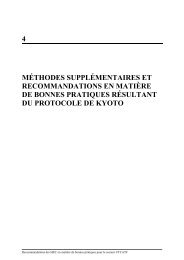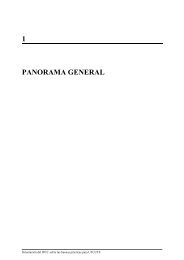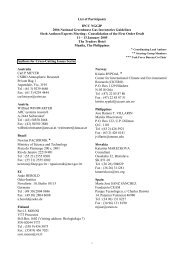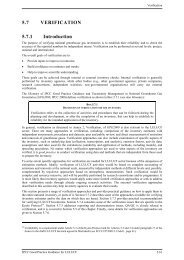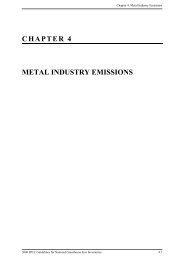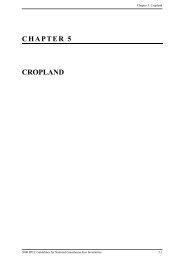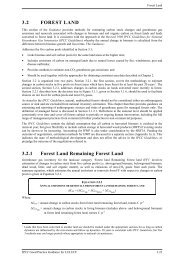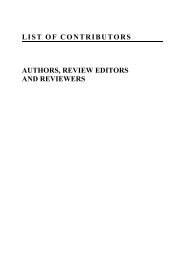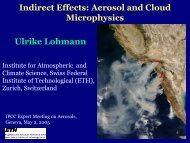Use of Models and Facility-Level Data in Greenhouse Gas Inventories
Use of Models and Facility-Level Data in Greenhouse Gas Inventories
Use of Models and Facility-Level Data in Greenhouse Gas Inventories
You also want an ePaper? Increase the reach of your titles
YUMPU automatically turns print PDFs into web optimized ePapers that Google loves.
<strong>Use</strong> <strong>of</strong> <strong>Models</strong> <strong>and</strong> <strong>Facility</strong>-<strong>Level</strong> <strong>Data</strong> <strong>in</strong> <strong>Greenhouse</strong> <strong>Gas</strong> <strong>Inventories</strong><br />
Summary<br />
The Australian national <strong>in</strong>ventory is <strong>in</strong> the process <strong>of</strong> transition<strong>in</strong>g from the use <strong>of</strong> tier 2 methods <strong>in</strong> which representative<br />
country-specific emission factors are applied <strong>in</strong> the emission calculations for all facilities with<strong>in</strong> a sector to the use <strong>of</strong> a<br />
set <strong>of</strong> tier 3 methods which utilises newly available <strong>in</strong>formation on facility-specific emission factors.<br />
The new <strong>in</strong>formation has been derived from the recent <strong>in</strong>troduction <strong>of</strong> a m<strong>and</strong>atory emissions report<strong>in</strong>g system (the<br />
National <strong>Greenhouse</strong> <strong>and</strong> Energy Report<strong>in</strong>g system – (NGERs)). The implementation <strong>of</strong> the NGER system <strong>in</strong>volved all<br />
major companies <strong>in</strong> Australia <strong>and</strong> has constituted a substantial allocation <strong>of</strong> resources <strong>and</strong> effort by private operators<br />
towards emissions measurement <strong>in</strong> Australia.<br />
The new <strong>in</strong>formation is yet to be <strong>in</strong>corporated <strong>in</strong>to the national <strong>in</strong>ventory. Guidance on the use <strong>of</strong> facility or plant-specific<br />
<strong>in</strong>formation <strong>in</strong> national <strong>in</strong>ventories is <strong>in</strong>cluded <strong>in</strong> the 2006 IPCC Guidel<strong>in</strong>es, which address the use <strong>of</strong> tier 3 methods for<br />
the Energy, IP <strong>and</strong> Waste sectors. However, the Guidel<strong>in</strong>es do not assume that all plant-specific <strong>in</strong>formation will be<br />
used <strong>in</strong> an <strong>in</strong>ventory as guidance is also provided on the use <strong>of</strong> plant-specific <strong>in</strong>formation as a QC tool to test the<br />
reasonableness <strong>of</strong> tier 2 national emission factors. Given these two broad scenarios, some <strong>in</strong>terpretation <strong>of</strong> the<br />
Guidel<strong>in</strong>es is required <strong>in</strong> the consideration <strong>of</strong> how to best use the new plant-specific <strong>in</strong>formation <strong>in</strong> the national <strong>in</strong>ventory.<br />
With future Australian <strong>in</strong>ventories <strong>in</strong> m<strong>in</strong>d, a decision tool has been developed to provide a framework for a consistent,<br />
coherent use <strong>of</strong> facility-specific <strong>in</strong>formation across all targeted sectors <strong>of</strong> the Australian <strong>in</strong>ventory.<br />
Given the nature <strong>of</strong> the IPCC guidance <strong>in</strong> this area, <strong>and</strong> the provision for the use <strong>of</strong> expert judgements for many<br />
decisions, IPCC workshops <strong>and</strong> conferences may have a useful role to perform <strong>in</strong> assist<strong>in</strong>g <strong>in</strong>ventory compilers <strong>and</strong><br />
other experts <strong>in</strong> develop<strong>in</strong>g their underst<strong>and</strong><strong>in</strong>g <strong>of</strong> how to improve national <strong>in</strong>ventories through the use <strong>of</strong> plant-specific<br />
data.<br />
Australia’s national <strong>in</strong>ventory’s use <strong>of</strong> plant-specific tier 3<br />
methods<br />
Australia’s national <strong>in</strong>ventory currently uses ma<strong>in</strong>ly tier 2 methods for energy, <strong>in</strong>dustrial processes <strong>and</strong> waste. For any<br />
source, the tier 2 methods commonly apply a representative country-specific factor to the national population <strong>of</strong> facilities<br />
that generate the emissions for the source. Two exceptions are fuels consumed for the purpose <strong>of</strong> electricity production<br />
<strong>and</strong> fugitive emissions from underground coal m<strong>in</strong>es where a tier 3 method is already <strong>in</strong> place (these two sources<br />
constitute around 50% <strong>of</strong> NGER emissions).<br />
The national <strong>in</strong>ventory is <strong>in</strong> the process <strong>of</strong> transition<strong>in</strong>g from the use <strong>of</strong> tier 2 methods to the use <strong>of</strong> a set <strong>of</strong> tier 3<br />
methods which utilise newly available <strong>in</strong>formation on facility-specific data (ma<strong>in</strong>ly emission factors based on carbon<br />
content <strong>of</strong> fuels). The adoption <strong>of</strong> tier 3 methods is especially valuable for fuels where the carbon content varies<br />
appreciably across the economy – this is particularly the case for coal but also natural gas. Tier 3 methods are less<br />
important for relatively homogenous fuels like petroleum based products.<br />
National <strong>Greenhouse</strong> <strong>and</strong> Energy Report<strong>in</strong>g System (NGERs)<br />
The catalyst for the transition to tier 3 methods has been the implementation <strong>of</strong> the National <strong>Greenhouse</strong> <strong>and</strong> Energy<br />
Report<strong>in</strong>g Act 2007. The Act provides for m<strong>and</strong>atory report<strong>in</strong>g <strong>of</strong> emissions (<strong>and</strong> energy) data by all companies that<br />
breach certa<strong>in</strong> thresholds <strong>and</strong> represents a significant enhancement if Australia’s national <strong>in</strong>ventory systems.<br />
The first report<strong>in</strong>g period under the NGER Act related to the Australian f<strong>in</strong>ancial year 2008-09 while the first reports<br />
submitted by companies were received <strong>in</strong> October 2009. Consequently, given these timeframes, the data received<br />
under NGERs is yet to be <strong>in</strong>corporated <strong>in</strong>to an Australian <strong>in</strong>ventory submitted under the UNFCCC.<br />
The features <strong>of</strong> the NGER report<strong>in</strong>g system <strong>in</strong>clude:<br />
IPCC Expert Meet<strong>in</strong>g Report 100 TFI


